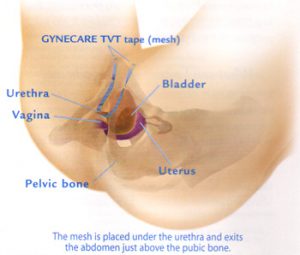
Stress incontinence in women can cause frequent involuntary release of urine during activities that put pressure on your bladder, such as coughing or laughing. The tension-free vaginal tape (TVT) procedure is designed to provide support for a sagging urethra so that when you cough or move vigorously or suddenly, the urethra can remain closed with no accidental release of urine.
In TVT surgery, a mesh tape is placed under your urethra like a sling or hammock to keep it in its normal position. The tape is inserted through tiny incisions in your abdomen and vaginal wall. No sutures are required to hold the tape in place.
Other sling surgeries are done in a way that is similar to TVT surgery. Transobturator tape (TOT) surgery is done almost as often as TVT in a slightly different way.
Why It Is Done
Tension-free vaginal tape is used to correct stress incontinence caused by sagging of the urethra. It is a relatively simple procedure that can be done with minimal hospitalization and recovery time.
How Well It Work
Tension-free vaginal tape surgery works as well as the Burch colposuspension surgery to cure stress incontinence. About 8 out of 10 women are cured (“dry”) in the year after TVT surgery. Long-term success rates are not known.
Surgery time, hospital stay, and recovery time are all shorter for women who have TVT compared to women who have retropubic suspension surgery.
Transobturator tape (TOT) surgery seems to work almost as well as TVT to cure women who have stress incontinence, although the evidence is not as strong.
